I visited both Atomic Bomb sites in Japan in 2023 and they really had an impact on me (see blog post Japan Atomic Bomb sites) but probably what touched me most about the experience was the story of Sadako.
She was a two year old when the bomb decimated her home town, Hiroshima, but had a pretty normal and happy childhood (the story goes) until she was 12. Many of Sadako’s neighbors died.

It was then that she contracted what they call “the atomic bomb” disease. Leukemia. She knew several children who had developed this disease and then died. One day she felt extremely tired and dizzy. This continued until she became so ill that her parents took her to the hospital. She died eight months later.
According to the displays at the Hiroshima museum, she was very stoic, not making a fuss about her Pain.
But she wanted to live and so she took on the project of making 1000 cranes using the folded paper technique call origami. Why 1000? There was a belief that if you made 1000 cranes, your wish would come true.
“An old story about cranes say they are supposed to live a thousand years. If a sick person folds one thousand paper cranes, the gods will grant her wish and make her well again.” Source: Sadako by Eleanor Doerr and Ed Young.
Sadako worked diligently on the project. Here’s where the facts are confusing. According to the Museum display she completed them where as a book I bought at the museum says she only completed six hundred and forty four and her classmates finished the rest after her death. They wanted her to be buried with 1000 cranes and she was.
According to her brother, Masahiro Sasaki, her brother, “She was desperately committed to folding paper cranes, talking to them about her pain, anguish or suffering. She pinned anxiety and loneliness of being alone on the cranes.” Written in a personal blog.
It doesn’t really matter how many cranes she folded . What matters is now the Crane has become a symbol of her wish for health and peace and children all over Japan make cranes and bring them to the Children’s Memorial in Hiroshima in her memory. In fact, the Memorial was created to honor her and other children who died as a result of the bomb. Children from 3100 schools in nine countries raised the money to build the Memorial.
We also saw chains of paper cranes at other Memorials, creating a colorful and happy splash.
I’m so touched by the power of a 12 year old and how her wish for health has become a symbol of peace across the globe.
This memorial has a statue of Sadaka standing on the Mountain of Paradise, holding a crane in her outstretched hands.
The wish engraved at the base of the memorial says:
This is our cry, This is our Prayer, Peace in the world.

The the images with black backgrounds are all photos of the signs at the Hiroshima Atomic Bomb Museum.

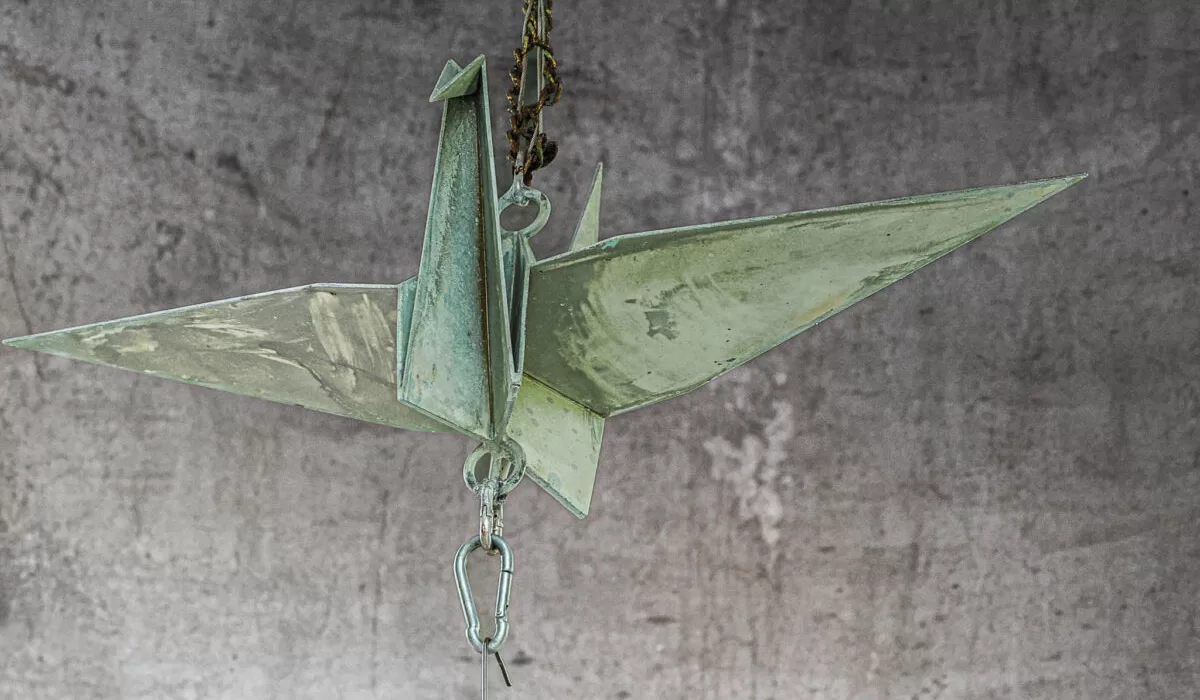










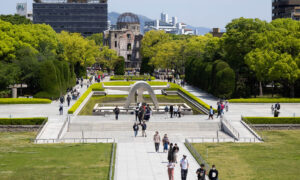
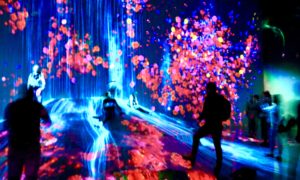
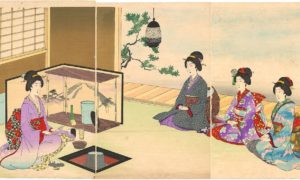
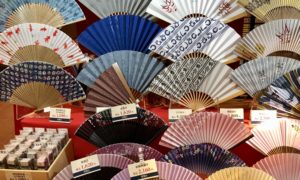
Comments
5 CommentsDana Friis-Hansen
Dec 4, 2023Thanks, Susan, for amplifying this story, and how origami cranes have become such a strong symbol for hope and collaborative commitment to a positive outcome. On our recent Tiny World Tour to Hiroshima, we, too, were struck by the power of the Atomic bomb sites, and the different ways that the event is commemorated, and the Children’s Memorial certainly stands out with its colorful contributions of cranes coming from all over the world. They even make recycled origami paper from cranes, so the process can continue. In our hotel, there were two tables with paper and instructions so that guests to the city could contribute their own. Best, Dana Friis-Hansen and Mark Holzbach
Susan J. Smith
Dec 7, 2023Dana, Thank you so much for your lovely and well thought out comment. I appreciate your sharing your experience.
Judy Bereza
Dec 5, 2023Susan, this is beautiful and hard to read at the same time. It brings to mind
the needless suffering of children in my lifetime, and throughout the ages.
Susan J. Smith
Dec 7, 2023Thank you, Judy, I so appreciate your comment.
Marie Preston
Dec 25, 2023Yes Susan. I had the same reaction to Sadako’s story, and took some of the same pictures when we were there in November. I even bought a little book: ONE THOUSAND PAPER CRANES by Takayuki Ishii when we got home to reread the story. One person can affect many lives.